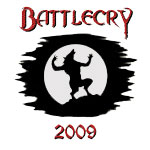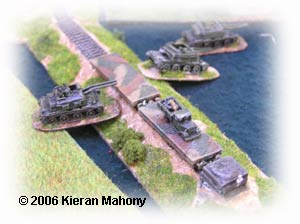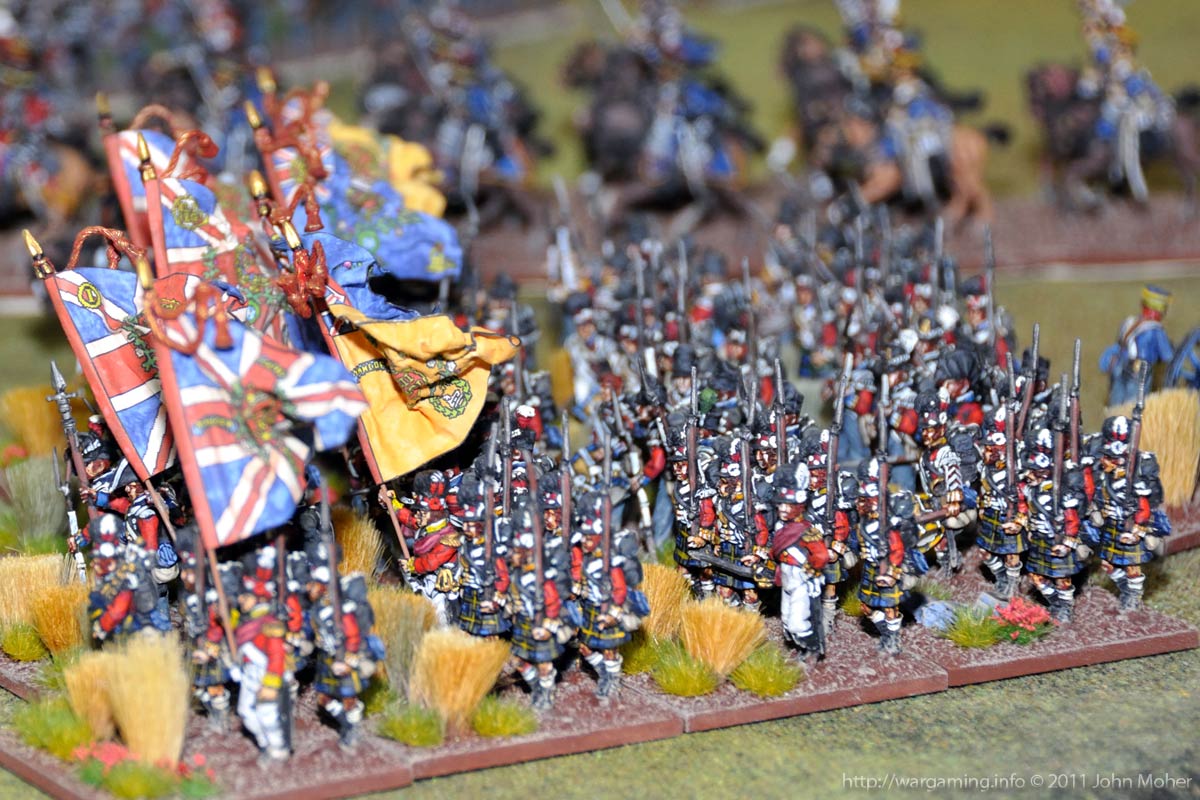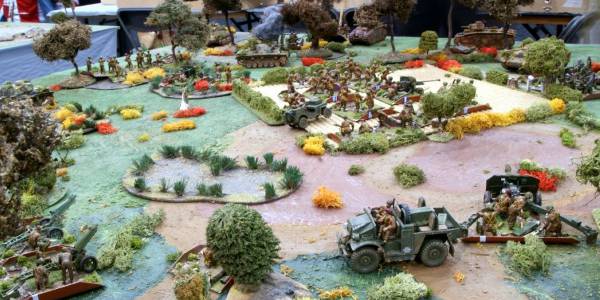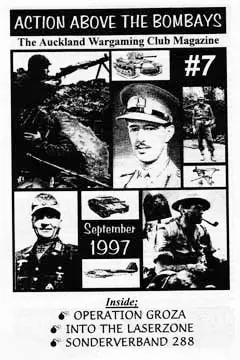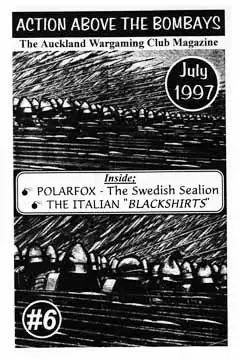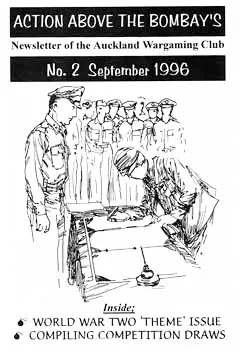Here in Auckland it’s that time again – BattleCry 2009, the premier Auckland Wargaming Convention hosted (as always) by the AMERICA Club from Auckland University. As always this year includes the 28mm Ancient & Medieval Doubles Competition, New Zealand’s original and first Ancient & Medieval Doubles Tournament – and the only one in 25mm-28mm scale! As with 2008 this year will be played with the DBMM Rules (2007 and previous years having been played under DBM), and Battleline Miniatures will be sponsoring the competition. BattleCry is over the weekend of the 21-22 February 2009. Continue reading “BattleCry 2009”
Category: News / Resources / Reviews
New Table Top Teasers Book!
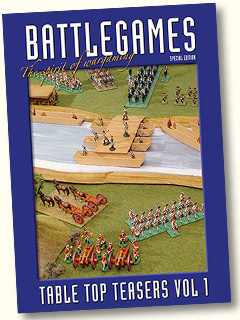 Battlegames Magazine announces the publication of the first Table Top Teasers wargaming scenario book by C. S. Grant.
Battlegames Magazine announces the publication of the first Table Top Teasers wargaming scenario book by C. S. Grant.
My copy of Table Top Teasers Volume 1 has just arrived from Battlegames – and I must say most inspiring. I loved reading C.S. Grant’s teasers back in the 80’s (in Battle, Military Modelling, & Practical Wargamer), and although these are a compiled reprint of the first 12 that have appeared in Battlegames, they are still well worth the money with extra colour and a game report for each one. Additionally the book includes 2 additional ‘bonus’ teasers, including a reprint of the very first ever teaser from Battle Magazine in 1978!
Get your copy now from Henry at Battlegames…
The new Wargaming.info
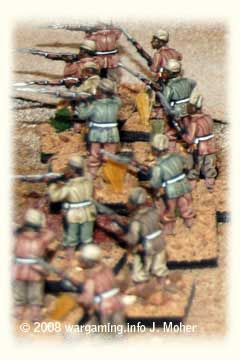
Today is the big day as I load the redesigned site into the live environment. Regrettably it is not fully 100% complete as some sections do not have all their material yet – but websites are always evolving creatures so as time permits I’ll get to those more obscure areas. If you are browsing the new site and find any odd links that don’t work or areas that don’t appear to display correctly, please let me know – the site has been designed with Opera and I have also tested it with Firefox & good ol’ sluggish I.E. – so it should display consistently & correctly in those browsers and any other W3C compliant ones. As always I appreciate any feedback, good or bad… I hope people enjoy and find something of interest?
Eyes from Ethiopia

In November 2008, New Zealand Photographer Kate MacPherson introduced sixteen children from Mercy Home in Addis Ababa, Ethiopia, to digital cameras. All had come either directly from living on the streets or from extremely poor and underprivileged backgrounds and had never seen a camera before. Their enthusiasm and delight in photography have culminated in some incredibly unique and inspired imagery. You can view and buy their images (the funds from purchases going to support them). Learn more at Eyes from Ethiopia…
Site Rebuild Complete
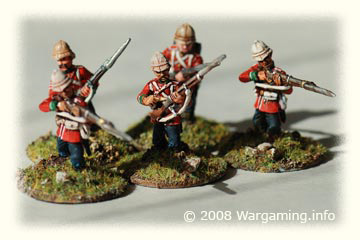
Frontier Miniatures 24th Foot from the Zulu WarWay back in February 2008 I started on an ambitious plan to revamp the entire site expecting it to take just 2-3 months. Now, in December 2008, I have just finished spending many months doing the full rewrite of the site using CSS to make it fully W3C compliant, and also to generally improve the design somewhat while keeping the original feel. Although I have not completed all parts of it I felt a need to publish the site to get it live on the web, and to show people it had not just gone dead for 10 months!
20mm (1/76th & 1/72nd) Figure Comparison

The following is a brief overview of several (but by no means all) of the manufacturers in this scale. Over time I may add more photo comparisons and details for these and other manufacturers. I have also included some plastic figures for completeness. The scale lines in the background are at 10mm, 20mm, and 25mm height.
Wargaming Scales
Figure scales are expressed two ways, either as a simple measurement, e.g. 25mm, defining how high a figure of a normal man or woman stands or as a ratio, e.g. 1/48th, defining how big a model vehicle, vessel, aircraft, or construction is in relation to the real thing. The emphasis here is on the former classification with the latter provided where possible as an approximate comparison.
Continue reading “Wargaming Scales”Brief History Of Wargaming
The following is a brief history of modern wargaming told in quotes from various wargaming books & authors:
“It was in Europe that the early forms of wargaming gradually took on a more sophisticated appearance. During the Seventeenth Century several variations on the basic game of chess were introduced. During the Eighteenth Century a number of games were introduced into France which departed from the idea of pieces and which used series of cards designed to impart basic military knowledge to the players. Also, at about this time, silver model soldiers were being used at the French Court to instruct the future king, Louis XIV, in the art of war” – David Nash (Wargames – 1974).
Continue reading “Brief History Of Wargaming”Wargaming Periods
Periods are the “Eras” or “Level of Technology” present for wargaming. Having a Greek Army of 300 BC facing a Russian Army of 1944 AD is obviously quite a mismatch and both armies need quite different sets of rules to control how they perform. Hence we have “Periods” in which armies all operated in similar ways, or with similar weapons, and can be ‘played’ using a common set of rules.
Continue reading “Wargaming Periods”A Brief Outline of Japanese Tank Divisions in World War II
1st Armoured Division, WDA.
Formed July 1942.
- 1st Mobile Infantry Regiment.
- 1st Anti Tank Battalion.
- 1st Tank Regiment.
- 5th Tank Regiment.
- 1st Armoured Recon Unit
- 1st Mobile Artillery Regiment.
- 1st Armoured Divisional Antiaircraft Defence Unit.
- 1st Armoured Divisional Engineer Unit.
To Win or Not To Win?
Or Why Ancients competitions are better for using win/draw/loss ranking systems.
Probably the 2nd loudest “discussion” at NatCon (held in Auckland, Easter 1997) was the ranking system used in the DBM competition. Some players had thought that ranking’s in the Swiss Chess draw would be determined by accumulated victory points, and were surprised to find that win/draw/loss was being used. Clearly the umpire and/or organisers stuffed up badly by not telling players exactly what variety of “Swiss Chess” was to be used, but why all the angst?? Isn’t one “Swiss Chess” system the same as any other? Not in this case!
Continue reading “To Win or Not To Win?”An Opinion on Wargame Draws
In a preceding article Ion Dowman clearly demonstrates the correct way to run a Swiss Draw tournament. One of the important factors in the Swiss system is the “Pairing” of opponents, and consequently how participants are ranked based on their results during the tournament. I would like to make some further observations and comments on this.
An issue that I personally consider significant is whether a Win is of greater value than two Draws? I believe it is, the reason being the artificial constraints imposed by the tournament environment which prevent all games from reaching their natural conclusions. This effectively means those players who are slow (whether intentionally, or unintentionally), who use the Fabian tactics Ion alluded to, or who compete without a reasonable knowledge of the rule set being used can often end up ranked in the middle of the field at the conclusion and having won perhaps only one game! While those who play to complete their games in the time allowed (and perhaps win two games in 6 rounds) are effectively penalised in comparison!
Continue reading “An Opinion on Wargame Draws”